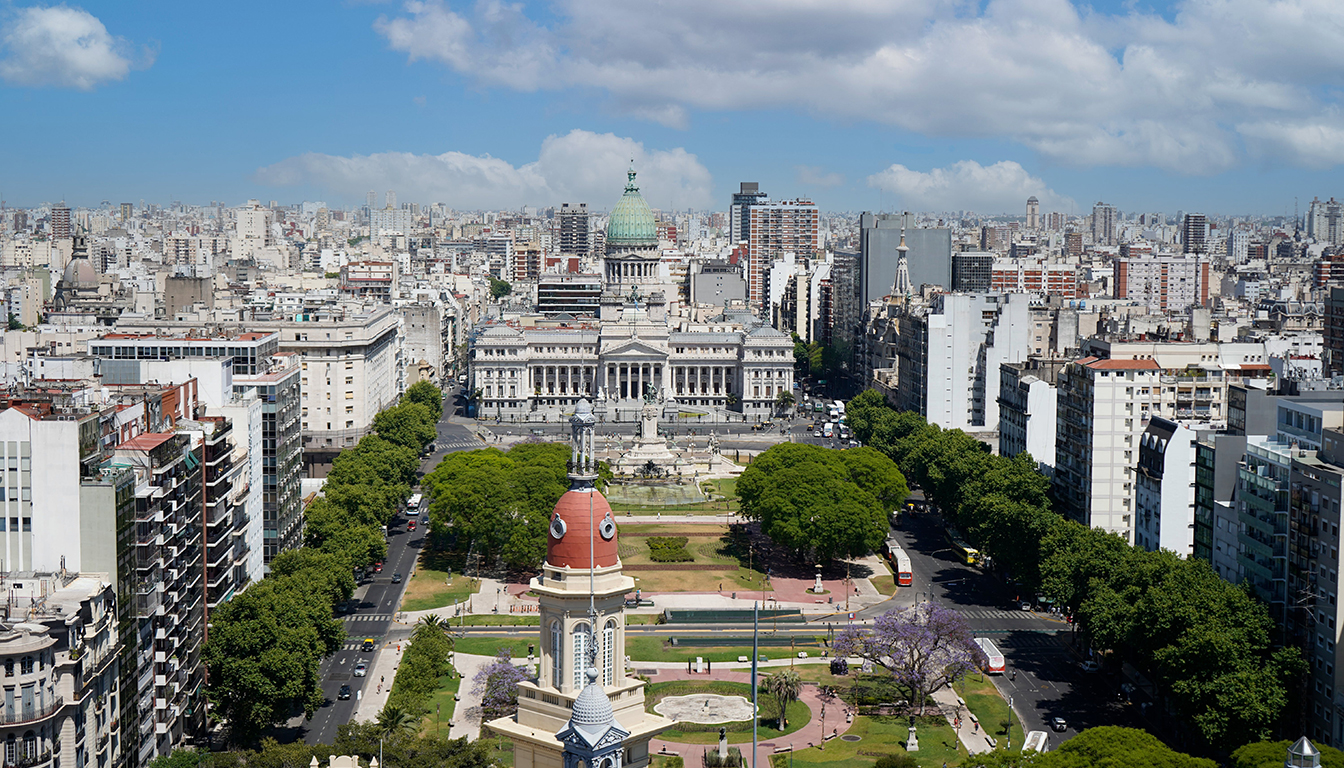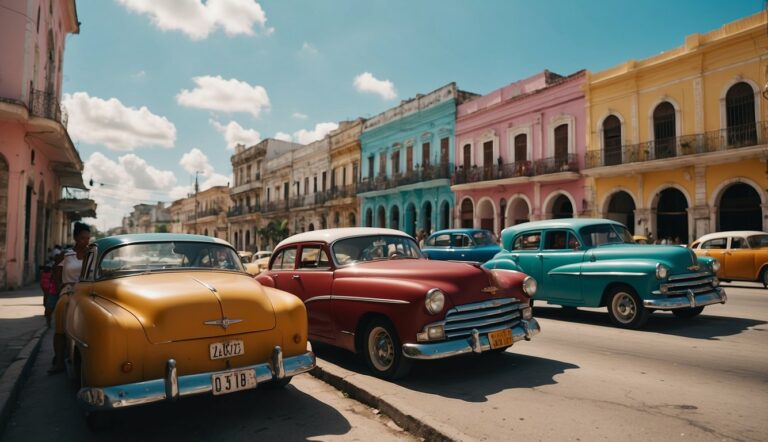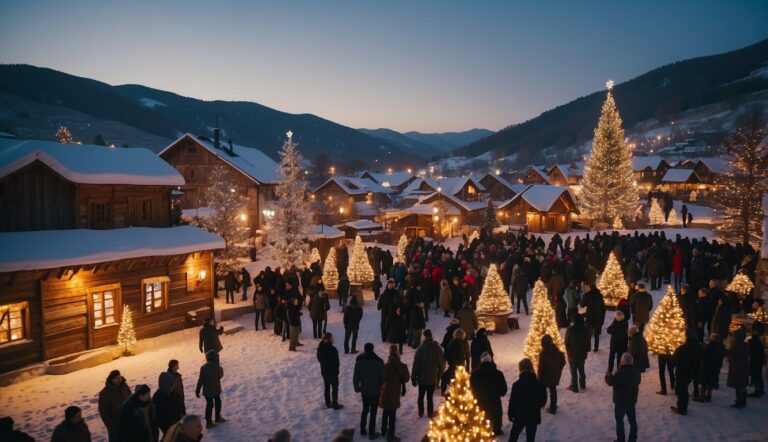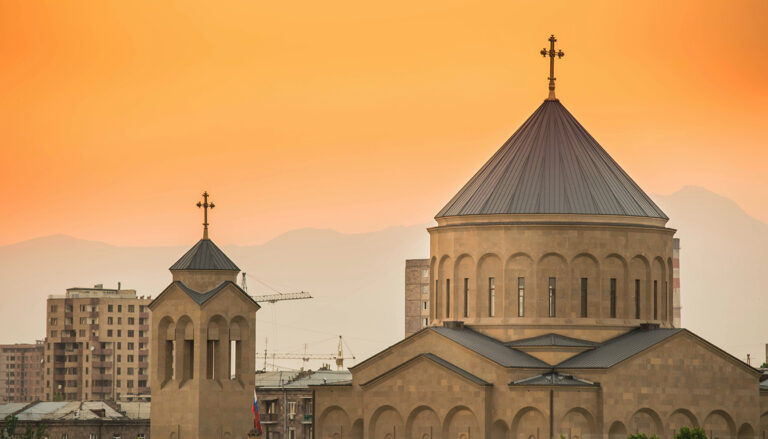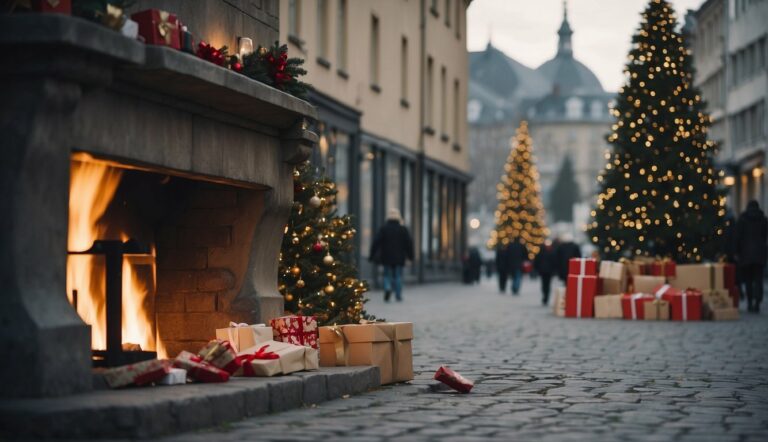Christmas in Argentina: Traditions and Celebrations Unveiled
Christmas in Argentina reflects the nation’s soulful blend of cultural traditions, where the festive spirit infuses the warm December air. Unlike the wintery Christmases of the northern hemisphere, Argentina’s holiday season is celebrated in the summertime, offering a unique and vibrant twist to the Yuletide festivities. Families and friends gather to mark the occasion, sharing joy and traditions that are both distinctively Argentine and universally familiar.
The celebrations commence on Christmas Eve, where the day is spent eagerly anticipating the evening festivities. As night falls, homes across Argentina light up with decorative displays while the scent of traditional holiday food begins to waft through the air. This is a time for Argentineans to enjoy each other’s company, culminating in fireworks at midnight, signalling the heartfelt exchange of greetings and the onset of Christmas Day.
Long-standing traditions play a central role in the celebrations, from the religious observance of midnight mass, Misa de Gallo, to the making of nativity scenes or ‘Pesebres’. The holiday season extends until January 6th, when the arrival of the Three Kings is celebrated. Throughout, the season is infused with the warmth and conviviality that are hallmarks of Argentine hospitality, making Christmas in Argentina both a festive and culturally rich experience.
History and Significance
Christmas in Argentina intertwines the country’s rich European heritage with religious ceremonials, reflecting a history deeply rooted in Spanish colonial influence and Catholic traditions. These elements and local customs shape the essence and celebration of Christmas in Argentina.
Advent and Religious Observances
Advent marks the beginning of the Christmas season, a period of preparation and reflection leading up to Christmas Day. Catholics in Argentina partake in several religious observances during this period. These include setting up the Nativity Scene, a central tradition, and attending the Feast of the Immaculate Conception on December 8th. This feast day is pivotal in Argentine Christmas customs, often accompanied by decorating homes and public areas with wreaths, garlands, and cotton balls to mimic snow. As the festive day approaches, attendance at church services increases, culminating in the Midnight Mass, a cornerstone event for many Catholics.
European Influences on Argentine Traditions
European, particularly Spanish, customs play an integral role in shaping Argentine Christmas festivities. The adoption of the Christmas tree, adorned with decorations and illuminated by lights, showcases the influence of European traditions. It’s a fusion point where local and Spanish customs blend, producing a distinct national character within Argentine Christmas customs. These elements, such as the bright decorations, serve as testament to the influential power of European culture on the traditions and celebration of Christmas in Argentina, fostering a sense of continuity and connection with their historical roots.
Preparations and Decorations
In Argentina, the Christmas season is marked by vibrant decorations and thoughtful preparations. Houses become beacons of festivity with a mix of traditional decor and bright lights while shopping areas buzz with people searching for the perfect gifts.
Home and Public Spaces
Argentinians adorn their homes and public spaces with a joyful array of decorations. The Christmas tree, an integral part of the festivities, is often artificial, adorned with ornaments, lights, and a shining star at the top. Underneath, families typically place the nativity scene or pesebre, which holds cultural significance. It’s common to see wreaths on doors, balconies twinkling with lights, and small figures of Papá Noel and reindeer adding to the holiday spirit.
Public spaces, such as the renowned Galerías Pacífico in Buenos Aires, also transform into holiday spectacles. Visitors can expect elaborate displays, including grand trees and festive lights that illuminate the shopping centers, creating a welcoming environment for holiday shoppers and tourists alike.
Shopping and Gifts
As the holiday approaches, Argentinians engage in the annual tradition of gift-giving. Shopping for gifts becomes a central activity, with many flocking to local markets and malls to find presents for their loved ones. It’s traditional to exchange gifts at midnight on Christmas Eve, adding a sense of excitement and anticipation to the shopping experience.
- Presents: Often include a variety of items from clothing to electronics; common gifts reflect personal preference and the close relationships between giver and receiver.
- Christmas Cards: A friendly gesture often accompanying gifts, extending heartfelt holiday wishes.
Stores are filled with a diverse selection of goods, and many Argentinians take pride in selecting thoughtful presents that convey their affection and good wishes. With the giving of presents wrapped in bright papers and adorned with ribbons, Argentinians express their generosity and share in the joy of the season.
Festive Activities and Entertainment
In Argentina, Christmas is a time for vibrant family gatherings and public festivities featuring traditional and modern entertainment. It’s a season when familial homes and public spaces buzz with the excitement of shared rituals and joyous celebrations.
Family Gatherings and Children’s Joy
Christmas in Argentina is a family-centric celebration, with Nochebuena, or Christmas Eve, being the pinnacle of holiday gatherings. On this night, families come together for an elaborate dinner that often lasts late into the night. Following tradition, children eagerly await midnight to open their gifts and receive presents from Papá Noel, the local name for Santa Claus. It’s not uncommon to see shoes left outside to be filled with gifts, underscoring the charm of these intimate familial celebrations.
Public Celebrations and Performances
Public festivities are remarkable for their fusion of local traditions and communal joy. Buenos Aires, the pulsing heart of Argentina’s cultural scene, lights up with a stunning display of Christmas decorations and lights. Central to the city’s yuletide ambience is the Galerías Pacífico mall, where visitors can admire a beautifully decorated Christmas tree set against the backdrop of art-adorned ceilings.
Performance arts play a significant role during the season, with tango shows like those at Madero Tango offering a flavor of iconic Argentine culture. These shows are sought after for their intimate portrayal of the dance and as entertaining holiday treats.
Meanwhile, the sky on Christmas Eve is illuminated with fireworks, adding a layer of spectacle to the celebrations. In some places across the country, globos, or paper lanterns, are released into the night sky, creating a magical view that lights up the hearts of observers.
A transition from family dinners to social outings marks the late hours of Nochebuena. After the midnight toast, it’s common for people to frequent bars, clubs, and restaurants or to gather on beaches for continued revelry, signifying the joyous and exuberant spirit of Argentinian Christmas festivities.
Traditional Holiday Foods
Argentinian Christmas food is the amalgamation of Italian and Spanish culinary traditions that shape the Christmas food landscape, offering a unique mix of flavours and dishes that reflect the country’s cultural diversity and preference for rich, savoury, and sweet indulgences.
Christmas Eve Dinner
The centrepiece of the Christmas Eve dinner in Argentina is often asado, a barbecue that includes various cuts of meat, prominently featuring beef. This is usually complemented by a range of side dishes, including various salads, such as Russian salad and stuffed tomatoes. Another popular choice is lechón navideño, a whole oven-roasted suckling pig, which is a staple in some households, particularly in rainy years. For those favoring European influences, vitel toné—sliced veal with a creamy sauce of anchovies and tuna—is a must-have on the Christmas Eve table.
Desserts and Sweets
Post main course, Argentinians savor a rich variety of desserts and sweets. Traditional Italian influences are evident with desserts like panettone and pan dulce, sweet breads studded with fruits and nuts. These are often accompanied by fruit salad, ice cream, and an assortment of sweets including chocolates and candied fruits. Torre de Panqueques, a layered pancake cake with sweet fillings, is another dessert that might grace the tables during the holiday season.
Drinks and Toasts
To complement their festive meals, Argentinians enjoy a selection of drinks. A good red wine is frequently chosen to harmonize with the richness of the asado. As midnight approaches, glasses are filled with champagne or sparkling wine to toast the arrival of Christmas Day. Throughout the evening, coffee may also be served, providing a warm and aromatic conclusion to the abundant feast.
Christmas Day and the End of Festivities
In Argentina, Christmas Day is characterized by a slower pace compared to the vibrant celebrations of Christmas Eve, as families devote the day to attending religious services and enjoying time together. The season concludes with Three Kings Day, celebrated on January 6, which holds both religious significance and is a time for family.
Religious Services and Family Time
Christmas Day in Argentina sees families congregating for Mass, a key aspect of the holiday’s observance due to the country’s strong Catholic traditions. Churches across the nation hold services to commemorate the birth of Jesus. Many families attend the Midnight Mass on Christmas Eve, which often shifts the main Christmas Day activities to a focus on rest and intimate family gatherings.
- Activities typically include:
- Attending Christmas Day Mass
- Sharing meals with close family members
- Exchanging gifts and well-wishes
Three Kings Day
Three Kings Day, also known as Epiphany, is celebrated on January 6. This day marks the biblical adoration of baby Jesus by the Wise Men and concludes the Christmas festivities in Argentina. Traditionally, children leave their shoes outside the door with grass or water for the Wise Men’s camels and awake to find gifts left for them. Religious services on this day include the Epiphany Mass where the story of the Wise Men is recounted.
- Key aspects of Three Kings Day:
- Children receiving presents, symbolizing gifts given by the Wise Men
- Families participating in the Epiphany Mass or related services
- A special significance in Argentine folklore as the definitive end of the holiday season
Modern Adaptations and Climate
The celebratory customs of Christmas in Argentina reflect the country’s cultural vibrancy and are uniquely adapted to the Southern Hemisphere’s summer climate.
Influence of Summer Season
During December, Argentina is embraced by the warmth of its summer season. Argentines experience a hot Christmas compared to the wintry scenes commonly associated with the holiday in the Northern Hemisphere. The pleasant temperatures and extended daylight hours shape many of the Argentinian Christmas traditions, steering celebrations outdoors. Traditional imagery of snow and sleigh bells gives way to beaches and coastal festivities. The warmth encourages gatherings such as asados (barbecues), reflective of the culture and customs that embrace the season.
Contemporary Celebrations
Argentinians have molded their Christmas celebrations to acknowledge the summer climate while preserving cultural traditions. Houses and public spaces display vibrant decorations, including red and white garlands, which are often intermingled with seasonal blooms. Outdoor settings are popular venues for Christmas festivities, where families and communities come together. Modern interpretations of Santa Claus, known locally as “Papá Noel,” adapt to the climate, with depictions often showing him in lighter attire suitable for the summer heat.
Conclusion
In Argentina, Christmas is both a reflection of local culture and global traditions. Celebrated during the southern hemisphere’s summer, December 24th is central to the nation’s festive observances, with gatherings that last well into the warm night. Christmas Eve is particularly special, as families come together in anticipation of midnight events.
Traditions
Families typically engage in a late-night feast featuring an array of traditional foods. At midnight, fireworks light up the sky, which, in some regions, is also dotted with globos, or paper lanterns, creating a spectacle of communal joy and celebration.
Celebrations
The fusion of cultures is evident in the Argentine Christmas, intertwining indigenous, Spanish, and Italian influences. This is noticeable in the array of culinary delights and the ubiquitous presence of ‘Papá Noel’, who brings gifts for the children, with presents traditionally opened after the stroke of midnight.
Family & Culture
The close-knit family gatherings are a testament to the Argentinian emphasis on family bonds during the holidays. Although customs may vary, the essence of Christmas in Argentina reflects a harmony of familial warmth amid the summer heat, cohesively binding the nation in a shared spirit of festivity.
In short, Argentina offers a unique Christmas experience, woven together with threads of vibrant culture and celebrated in the embrace of families under the Southern Cross.

